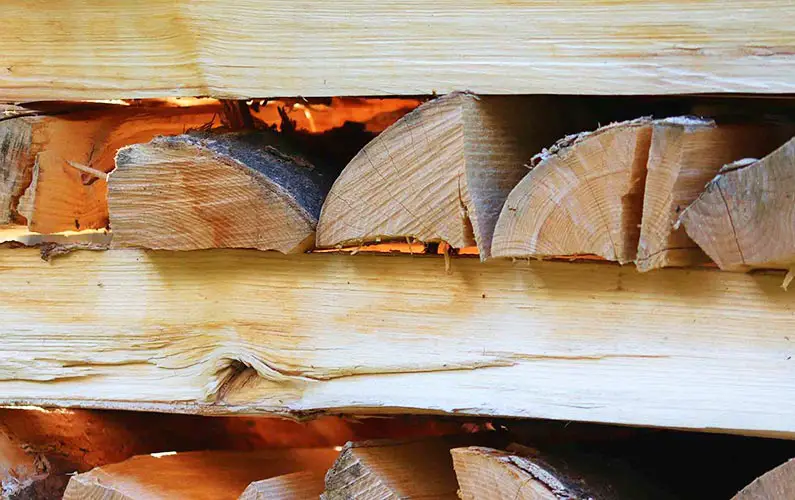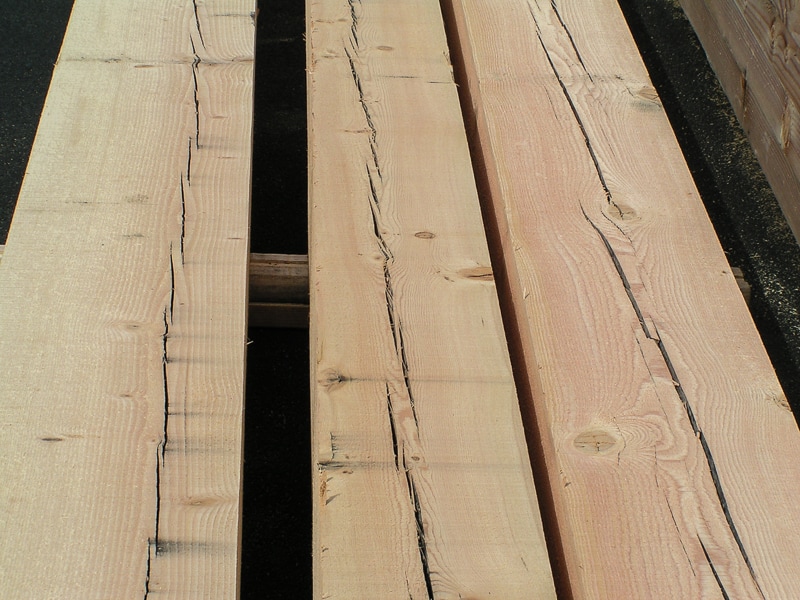To season wood efficiently, it’s recommended to split it before seasoning as dry wood is easier to split. Dry wood has less moisture, reducing resistance during cutting and splitting.
Splitting wood before seasoning increases the exposed surface area, thus accelerating the drying process. Properly seasoned firewood is essential for efficient burning, so ensuring it is adequately split before stacking and storing is crucial. By following these steps, you can effectively prepare firewood for optimal burning and heat efficiency.
The Importance Of Splitting Wood
Splitting wood is a crucial step in the firewood preparation process. It not only enhances the efficiency of the drying process but also ensures a more sustainable and cleaner burning experience. The importance of splitting wood lies in maximizing surface area exposure and improving drying time.

Maximizing Exposed Surface Area
- Splitting wood increases the surface area exposed to air and sunlight, facilitating faster evaporation of moisture.
- More exposed surface area means better airflow around the wood, preventing mold and decay.
Improving Drying Time
- Split wood dries more rapidly compared to unsplit logs due to increased air circulation.
- Faster drying time reduces the risk of mold growth and ensures a more efficient burning process.

Credit: en.wikipedia.org
Benefits Of Seasoning Wood Before Splitting
Splitting wood before seasoning leads to faster drying as the smaller pieces have more surface area, allowing moisture to evaporate quicker. This results in a more efficient seasoning process, making the wood easier to handle and ignite once dried. Additionally, smaller pieces are easier to store and stack.
Splitting wood before seasoning offers several advantages that can enhance your wood preparation process.
Enhanced Drying Process
Drying wood before splitting accelerates the seasoning process, allowing moisture to escape more efficiently.
Reduced Effort In Splitting
Seasoned wood is easier to split due to lower moisture content, requiring less effort and reducing the strain on tools.
Advantages Of Splitting Wood Before Seasoning
[if IE]> <![endif][if !IE]> <![endif]Splitting wood before seasoning offers several benefits. It can lead to increased air circulation, quicker drying time, and easier handling during the seasoning process. By preparing the wood in smaller pieces beforehand, you can optimize the seasoning process and ensure a more efficient and effective outcome.
Increased Air Circulation
Splitting wood before seasoning increases the surface area exposed to the air, promoting better air circulation throughout the wood. This allows for more efficient evaporation of moisture, resulting in a quicker and more thorough drying process. Additionally, improved air circulation helps prevent mold and mildew growth, contributing to higher wood quality.
Quicker Drying Time
Smaller, split wood pieces dry faster compared to unsplit logs. This is due to the reduced moisture content and increased exposure to air, enabling more rapid evaporation. As a result, splitting wood before seasoning can significantly shorten the overall drying time, allowing you to obtain seasoned firewood more quickly.

Credit: en.wikipedia.org
Best Practices For Splitting And Seasoning Firewood
To ensure optimal firewood quality, it is generally recommended to split the wood before seasoning it. This allows for faster and more efficient drying as the smaller pieces have less moisture content, making them easier to ignite and burn efficiently.
Splitting before seasoning also helps to speed up the overall drying process, ensuring you have well-seasoned firewood ready for use.
Choosing The Right Tools
When it comes to splitting and seasoning firewood, having the right tools is essential. The most common tool for splitting firewood is a maul or splitting axe. These tools have a heavy, wedge-shaped head that makes it easier to split the wood. Ensure that your maul or axe is sharp and in good condition to achieve clean and efficient cuts.
Additionally, using a log splitter can greatly speed up the process of splitting wood, especially if you have a large amount of firewood to split. Log splitters come in horizontal and vertical designs, and they can be powered by electricity, gas, or hydraulic systems.
Optimal Time For Splitting
Timing is crucial when it comes to splitting firewood. Ideally, you should split wood during the late winter or early spring, when the wood has had enough time to dry out over the winter months. This will ensure that the wood is seasoned and ready to burn by the time colder weather arrives.
In some cases, it may be necessary to split green or freshly cut wood. While this can be more challenging, as the wood is more moist and harder to split, doing so allows the wood to dry and season faster. However, keep in mind that green wood may require a longer seasoning period.
Storage Considerations
Proper storage is crucial to ensure that your firewood remains dry and ready to burn. When stacking firewood, make sure to leave enough space between each stack to allow for air circulation. This helps to prevent mold and fungi from growing on the wood.
For additional protection against moisture, consider covering your stacked firewood with a tarp or waterproof cover. This will help to keep rain and snow from soaking into the wood, slowing down the drying process.
It is also important to store your firewood off the ground, on pallets or racks. This helps to prevent moisture absorption from the soil, which can lead to rotting and decay.
Remember, properly split and seasoned firewood is essential for efficient and clean burning. By following these best practices, you can ensure that your firewood is ready to provide warmth and comfort during the colder months.
Common Myths And Misconceptions
When it comes to seasoning firewood, there are a few common myths and misconceptions that can lead to confusion. One such misconception is whether wood should be split before or after seasoning. Let’s address this myth and separate fact from fiction by exploring the truth behind wood seasoning in unsplit logs and the drying time of unsplit wood.
Wood Seasoning In Unsplit Logs
Contrary to popular belief, unsplit logs can still be seasoned. While it is true that splitting wood exposes a larger surface area, facilitating faster drying, unsplit wood can also be effectively seasoned. The key is to ensure proper airflow around each log, allowing moisture to evaporate. This can be achieved by stacking the logs with small gaps in between, creating channels for air circulation.
Drying Time Of Unsplit Wood
Unsplit wood may take longer to dry compared to split wood due to its larger size and higher moisture content. However, with the right approach, unsplit wood can still be seasoned efficiently. It is important to choose smaller logs, as they tend to dry faster than larger ones. Additionally, removing the bark can help accelerate the drying process by allowing moisture to escape more easily.
Although split wood generally dries faster, unsplit wood can still be seasoned by following these tips. The key is to allow for proper air circulation and choose smaller logs to reduce drying time. By debunking the myth that only split wood can be seasoned, you can maximize the potential of your firewood and ensure a more efficient burning experience.

Credit: www.carolinatimberworks.com
Frequently Asked Questions On Split Wood Before Or After Seasoning
Should Wood Be Seasoned Before Splitting?
Seasoning wood before splitting is recommended as dry, seasoned wood is easier to split due to lower moisture content.
Is It Better To Split Wood Green Or Seasoned?
Splitting seasoned wood is better. Dry wood is easier to split as it contains less moisture.
Can Unsplit Wood Be Seasoned?
Unsplit wood should be seasoned, but larger pieces may take longer. Splitting wood before seasoning increases drying time.
Does Split Wood Season Faster?
Split wood dries faster, resulting in quicker seasoning. Removing the bark and splitting the wood in fall or winter is ideal for faster drying. Splitting wood before seasoning increases surface area, speeding up the drying process.
Can Unsplit Wood Be Seasoned?
Unsplit or large pieces of wood take longer to season, so it is important to adequately split them before storage.
Conclusion
Splitting wood before seasoning has several advantages, including faster drying, easier handling, and more efficient use of space. By increasing the exposed surface area, the wood dries more rapidly, making it ready for use sooner. Whether it’s for your fireplace or outdoor activities, properly seasoned and split wood is essential for optimal performance and convenience.